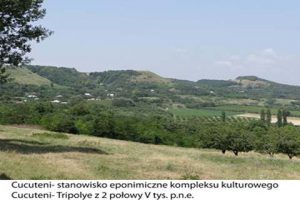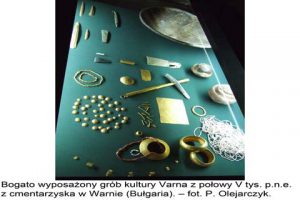Project information
Project title: Forms of cult, religion and social organisation in Prehistory and the Middle Ages
Project lead:Prof. dr hab. Sławomir Kadrow
Project lead, institutional: Institute of Archaeology and Ethnology (IAE PAN), Centre for Archaeology of Hills and Uplands, within Team E.1.
Project financing: statutory
Contact:
e-mail:slawekkadrow@gmail.com
telephone: +48 4222905 (Centre for Archaeology of Hills and Uplands, ul. Sławkowska 17, Kraków);
+48 698298837 (kom. Sławomir Kadrow);
Characteristics
Research objective:
To study material culture indicative of man’s ritualistic, religious and social practices.
Detailed goals of the project:
The research looks into all material traces and manifestations of ritualistic, religious and social practices of the Prehistoric and Medieval man. As indicated by archaeology’s experience to-date, these subjects have been largely discussed based on analyses of burial ritual. This is because all rituals (including burial-related), while epitomising a circulation of symbolic meanings in culture, invariably involve the use of material objects. And archaeology obviously takes interest in the past by studying material traces — primarily artefacts — of all kinds of human activity. Ritual, on the other hand, is largely associated with conventionalised cultural practices — religious and social. It represents a symbolic-expressive aspect of behaviour, carrying a certain message about social relations, often in a manner which is relatively dramatised or formalised. It assumes an especially important role at a time of crisis, by helping cope with uncertainty, and its significance is especially high in pre-writing communities. Ritual has been subjected — as well as giving testimony — to historical changes, and it very clearly signalled substantial changes in the realm of authority. Important features of ritual include its being coded by those who are not its executants, and also its performative nature. As it transpires from this description, the analysis of ritual in this particular context carries a big research potential. Simultaneously, the previously indicated characteristics of ritual point out — for yet another time — to the importance of studying it from many perspectives, that is (in other words) taking an interdisciplinary approach.
Archaeological, historical and (since 2013) sociological analyses of various manifestations of man’s ritualistic, religious and social (socio-cultural) practices, registered in Central Europe and the Balkans between the Neolithic and the Early Medieval times.
The focus of these analyses is on: cultural landscape, funeral rituals and religious practices, as manifested in clothing and devotional objects.
This research team’s assignment is to study the cultural landscape of Lesser Poland (Małopolska) in the Neolithic and Early Bronze Age.
One important element of studies into the cultural landscape is research at the Dinoš site in Montenegro.
Another item on the team’s research agenda is the analysis of symbolic-object manifestations of in the context of Lusitian Culture finds, and analysis of their meanings.
Interesting prospects are offered by studies into untypical examples of funeral customs in Barbaricum during the Roman Period and the Migration Period.
Wide-scale studies and analysis of clothing elements, devotional objects, funeral rites, and Byzantine religiosity, including its adaptation outside the borders of the Byzantine Empire.
Project timetable:
E.2.I. Study into the cultural landscape of Lesser Poland in the Neolithic and Early Bronze Age.
2012 – Drafting the texts of two articles: 1. „ Study into the cultural landscape of Lesser Poland in the Neolithic and Early Bronze Age in several selected regions of Lesser Poland”; 2. „Theory of cultural landscape research in light of experience from study into Neolithic and Early Bronze settlement micro-regions in Lesser Poland”; author: S. Kadrow.
2013 – Drafting the text of an article devoted to the cultural landscape of Cucuteni-Tripolye site; author: S. Kadrow.
E.2.II. Study into the cultural landscape of Dinoš, Montenegro.
2012 – Drafting the text of the article „Landscape research in Dinoš, Montenegro”; author: U. Bugaj.
E.2.III. Archaeology of Byzantine Empire (6th-14th centuries).
2012 – Drafting the text of the monograph’s chapter “Elements of Byzantine garb in light of iconographic, archaeological and written sources”; author: M. Wołoszyn.
2012 – Progress report on the subject: “Analysis of Byzantine religiosity in light of written, iconographic and archaeological sources (devotional objects, changes in funeral rites)”; author: M. Wołoszyn.
2012 – Progress report on the subject: “Byzantium without borders (Byzantine artefacts outside the borders of the Empire, and the importance of Constantinople for the history of European civilisation)”; author: M. Wołoszyn.
2015 – Print-ready copy of the monograph “Archaeology of Byzantine Empire (6th-14th centuries)”; author: M. Wołoszyn.
E.2.IV. Manifestations of symbolic culture in the Lusatian Culture.
2012 – Drafting the text of the monograph’s chapter “Symbolic objects at cemetery and settlement sites and elements of figurative art in Bronze Age Lusatian Culture in south-eastern Poland”; author: P. Jarosz.
2013 – Drafting the text of the monograph „Manifestations of symbolic culture in Bronze Age Lusatian Culture in south-eastern Poland”; author: P. Jarosz.
E.2.V. Untypical funeral customs in the central and eastern parts of Barbaricum during the Roman Period and the Migration Period.
2012 – Drafting the text of the monograph’s chapter “Untypical burials in archaeology”; author: K. Skórka.
2015 – Drafting the text of the monograph “Untypical funeral customs in the central and eastern parts of Barbaricum during the Roman Period and the Migration Period”; author: K. Skórka.
Planned results:
The project will be crowned with three monographs:
2013: „Manifestations of symbolic culture in Bronze Age Lusatian Culture in south-eastern Poland”; author: P. Jarosz.
2015: “Archaeology of Byzantine Empire (6th-14th centuries)”; author: M. Wołoszyn.
2015: “Untypical funeral customs in the central and eastern parts of Barbaricum during the Roman Period and the Migration Period”; author: K. Skórka.
Articles devoted to:
2012: - cultural landscape; authors: S. Kadrow, U. Bugaj
2013: - cultural landscape; author: S. Kadrow
Publications
Bibliography
Articles
Kadrow S. 2011. Confrontation of social strategies? - Danubian fortified settlements and the Funnel Beaker monuments in SE Poland. (w:) red. M. Furholt, F. Lüth, J. Müller, Megaliths and Identities Early Monuments and Neolithic Societies from the Atlantic to the Baltic 3rd European Megalithic Studies Group Meeting 13th – 15th of May 2010 at Kiel Universitiy. Bonn, 185-198.
Kadrow S. 2011. Kupferzeitliche Sozialstrukturen. (w:) red. S. Hansen, J. Müller, Sozialarchäologische Perspektiven: Gesellschaftlicher Wandel 5000-1500 v.Chr. zwischen Atlantik und Kaukasus. Internationale Tagung 15.-18.Oktober 2007 Kiel (= Archäologie in Eurasien 24). Mainz 2011, 107-121.
Kadrow S. 2011. Power and Authority and the Problem of Interdisciplinary Archaeological Studies. (w:) red. S. Kadrow, D. Wojakowski, Space, Power, Religion (= Analecta Archaeologica Ressoviensia 6). Rzeszów, 11-54.
Kadrow S. 2011. Mitologizacyjny charakter teorii migracjonistycznych w archeologii - wybrane zagadnienia, (w:) red. A. Marciniak, D. Minta-Tworzowska, M. Pawleta, Współczesne oblicza przeszłości. Poznań, 63-80.
Kadrow S. 2012. Źródła i mechanizmy zmiany kulturowej. Przypadek wczesnego eneolitu. (w:) red. B. Gediga, A. Grossman, W. Piotrowski, Rytm przemian kulturowych w pradziejach i średniowieczu. Biskupin-Wrocław, 233-259.
Kadrow S. 2012. Regiony i regionalizacja w archeologii - wybrane zagadnienia. (w:) red. J. Hoff, S. Kadrow, Regiony i regionalizm w archeologii i historii. Rzeszów (w druku)
Books
Kadrow S. , Wojakowski D. (red.) 2011. Space, Power, Religion (= Analecta Archaeologica Ressoviensia 6). Rzeszów.





